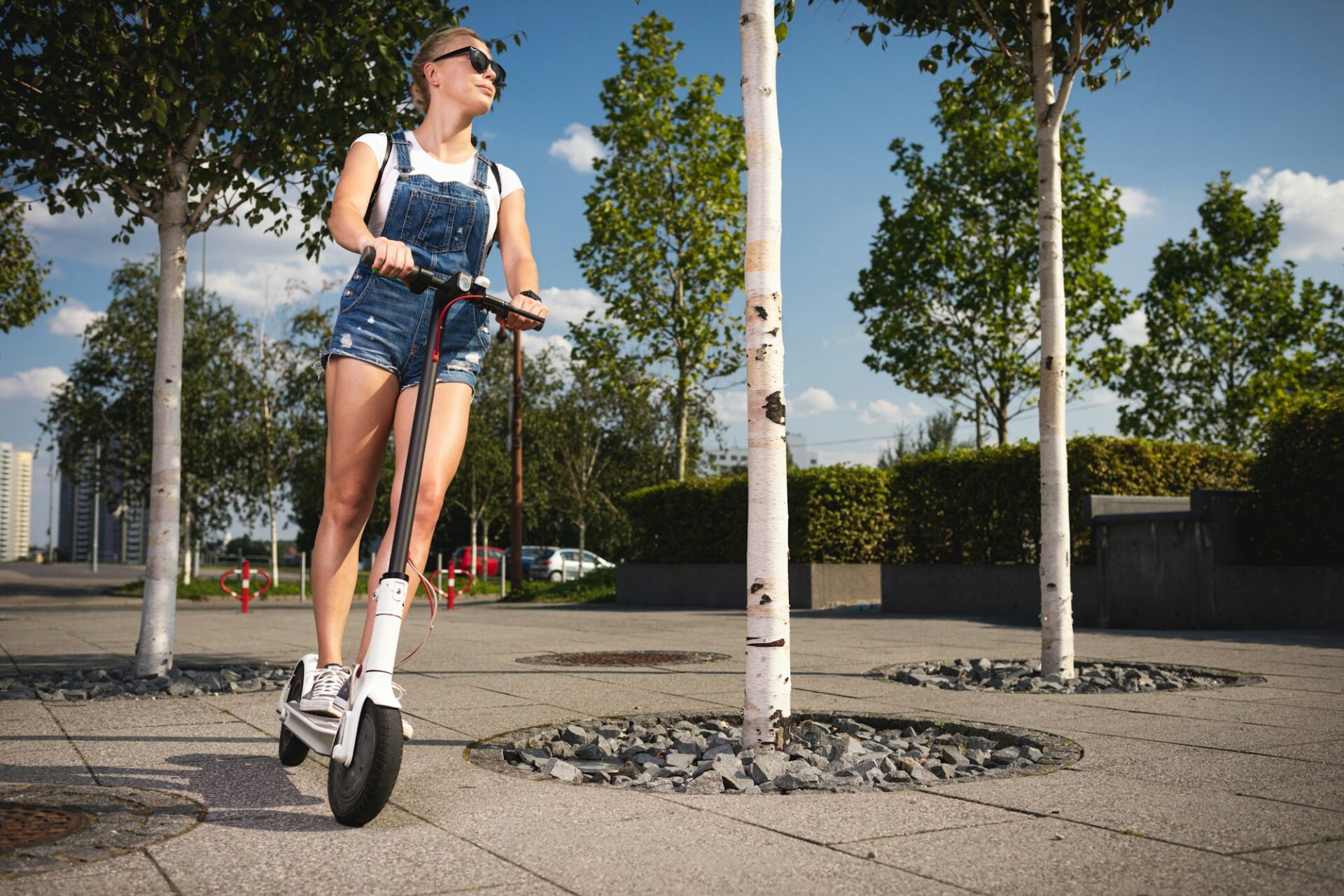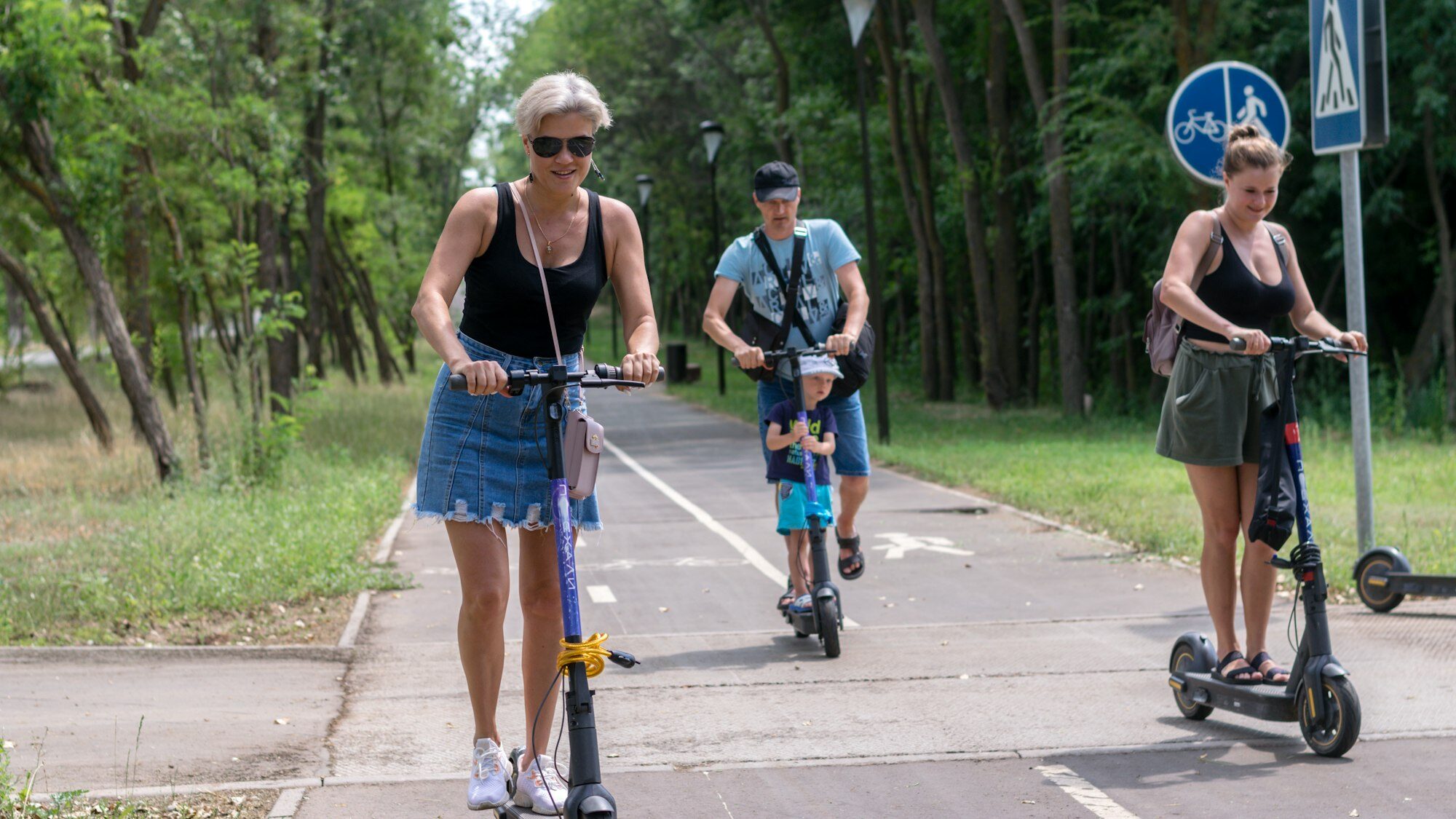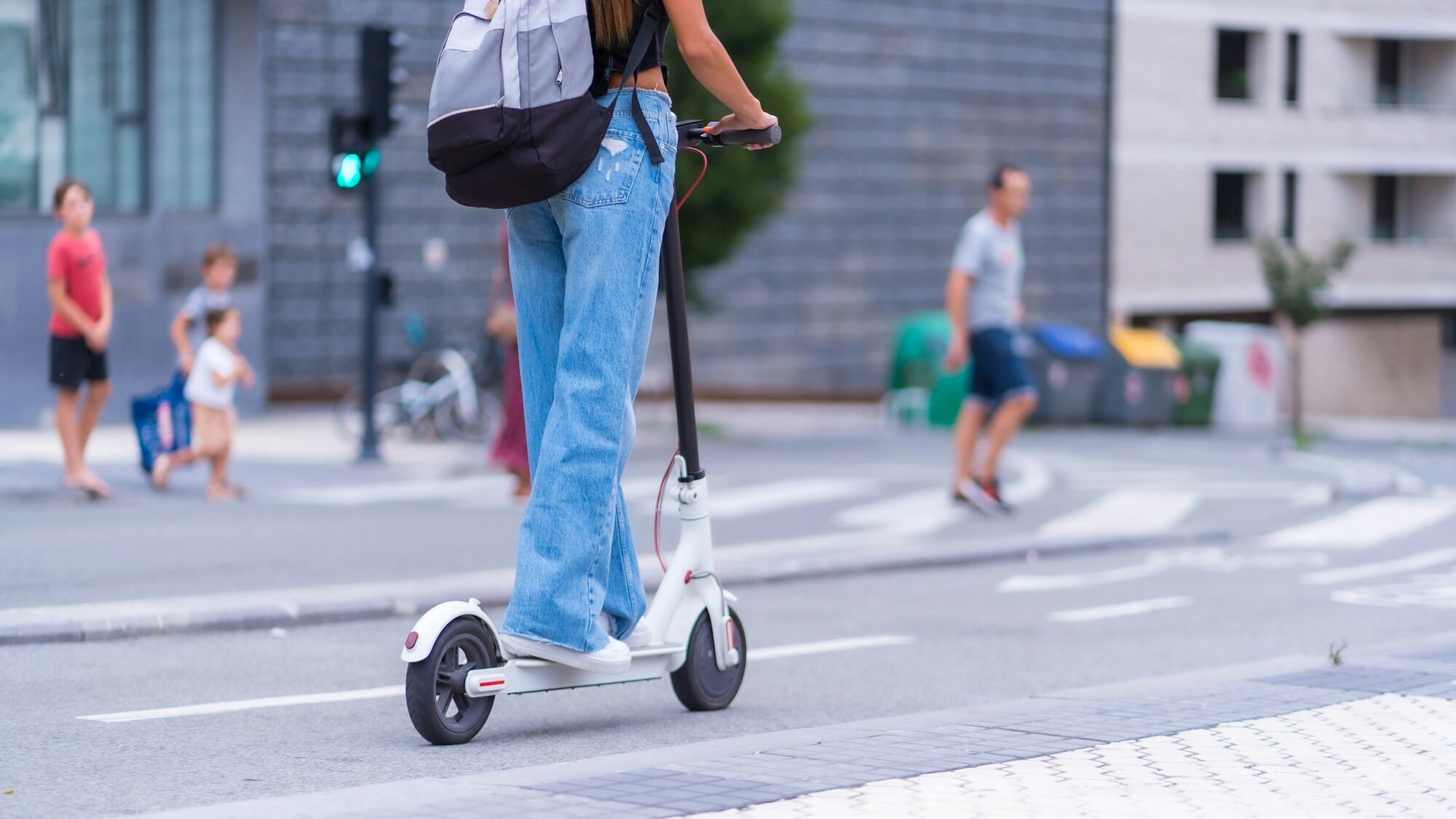Electric scooters have revolutionized urban commuting, offering an eco-friendly, convenient, and fun way to get around town. However, as their popularity surges, so does the confusion surrounding where it’s appropriate and legal to ride them. One of the most frequently asked questions by scooter enthusiasts is, “Can I ride my electric scooter on the sidewalk?” The answer, unfortunately, isn’t straightforward and can vary greatly depending on your location.
In this article, we’ll delve into the intricacies of scooter laws and regulations, specifically targeting sidewalk usage. We’ll cover essential aspects such as local regulations, safety tips, and rider responsibilities to ensure your scooting adventures are both enjoyable and compliant with the law. Whether you’re a novice rider or a seasoned pro, understanding the dos and don’ts of riding is critical. So, let’s get rolling and clarify the rules and best practices for use on sidewalks.
Understanding Electric Scooter Laws
Understanding the laws governing scooter usage is essential for all riders. These laws can vary widely between different regions, and knowing them ensures not just compliance but also your safety and the safety of others.
Federal vs. Local Regulations
- Federal Regulations: Most countries have federal regulations that set the framework for scooter usage. For instance, in the U.S., the Consumer Product Safety Commission (CPSC) oversees safety standards.
- Local Regulations: Local governments, such as states or municipalities, often have more specific rules that could affect where and how you can ride your scooter. Always check the local laws in your area.
Speed Limits
- Many regions impose speed limits to minimize accidents. These limits can range from 15 to 25 mph or even lower in some areas.
- Exceeding these speed limits can result in fines or other penalties.
Helmet Requirements
- Helmets are often required by law, especially for riders under a certain age, usually 18.
- Some locations require all riders to wear helmets regardless of age.
Age Restrictions
- Many places have age restrictions for e-scooter riders. Often, the minimum age is around 16 years old, but this can vary.
- Younger riders may be required to be supervised by an adult.
Scooters On Sidewalks
- Regulations regarding sidewalk and bicycle path usage are often stricter. In many places, it is illegal to ride on the sidewalk to protect pedestrians.
- When sidewalk riding is allowed, always yield to pedestrians and maintain a slow speed.
Understanding and adhering to these laws and regulations is the first step in ensuring you ride legally and safely. In the next section, we will dive into specific policies for sidewalk riding, helping you navigate these regulations more effectively.

Sidewalk Riding Policies: What You Need to Know
Riding on sidewalks is a topic governed by a variety of local regulations. These regulations are crafted to ensure safety for both riders and pedestrians.
General Rules on Sidewalk Riding
- Prohibitions: In many cities, riding on sidewalks is strictly prohibited. This is primarily to protect pedestrians and manage traffic effectively.
- Local Variations: Some municipalities may allow sidewalk riding but impose strict speed limits and additional guidelines to ensure safety.
Specific Sidewalk Riding Policies
- Speed Limits: When riding on sidewalks is permitted, the speed limits are typically much lower. Often, this limit is no more than 5-10 mph.
- Yielding to Pedestrians: Always yield the right of way to pedestrians. Pedestrian safety takes precedence over convenience for scooter riders.
- Restricted Areas: Even in cities that allow sidewalk riding, certain areas like business districts, school zones, and high-traffic pedestrian areas often have restrictions.
Electric Scooter Traffic Laws
- Designated Lanes: Many places that restrict sidewalk riding have designated bike lanes or scooter lanes to facilitate safe travel.
- Crosswalks and Intersections: When crossing streets, always use designated crosswalks and obey traffic signals. This reduces the risk of accidents with vehicles.
Electric Scooter Usage Guidelines
- Stay Informed: Regularly check with local transportation authorities for updates on scooter sidewalk rules and regulations.
- Public Awareness: Educate yourself and others on the proper and legal use to enhance community safety.
- Community Involvement: Participate in or follow community discussions around transportation policies, as these rules are often subject to change.
Understanding and following these sidewalk riding policies can help you avoid fines and ride responsibly. The next section will provide practical safety tips for those instances where sidewalk riding is permitted, ensuring you stay safe and considerate of others.

Electric Scooter Safety Tips for Sidewalk Usage
Even in areas where sidewalk riding is permitted, it’s crucial to adopt practices that ensure the safety of both the rider and pedestrians. Here are essential safety tips specifically for sidewalk usage:
Speed Management
- Maintain Low Speeds: Always ride at a slow pace, typically at maximum speeds of 5-10 miles per hour. This reduces the risk of accidents and allows for better control.
- Acceleration and Braking: Avoid sudden acceleration or braking. Gradual changes in speed help maintain stability and control.
Awareness and Visibility
- Be Vigilant: Constantly scan your surroundings for pedestrians, obstacles, and intersections. Being aware can help you react promptly to any unforeseen situations.
- Use Lights: Equip your scooter with front and rear lights, especially when riding in low-light conditions. This improves your visibility to others.
- Wear Reflective Gear: Wearing reflective clothing or accessories can make you more noticeable to pedestrians and drivers.
Interaction with Pedestrians
- Yield the Right of Way: Pedestrians always have the right of way on public roads. Slow down or stop if necessary to let them pass safely.
- Announce Your Presence: Use a bell or verbally alert pedestrians when approaching from behind. This helps avoid startling them or causing collisions.
- Respect Personal Space: Maintain a safe distance from pedestrians to prevent accidents and ensure a comfortable space for all sidewalk users.
Safe Riding Practices
- Proper Positioning: Follow traffic rules and stay on the outer edge of the sidewalk to allow pedestrians as much space as possible.
- Distraction-Free Riding: Avoid using your phone or other distractions while riding. Focus solely on the path ahead.
- Check Local Guidelines: Regularly consult local usage guidelines to stay up-to-date with any changes in regulations.
Additional Safety Measures
- Protective Gear: Always wear a helmet and consider additional protective gear like elbow and knee pads.
- Regular Maintenance: Ensure your scooter is in good working condition. Regularly check brakes, tires, and lights.
By following these safety tips, you can minimize risks and enhance the overall riding experience on sidewalks. The next section will discuss where else you can legally ride electric scooters, providing alternative pathways and lanes designed for safer travel.

Where to Ride Electric Scooters Legally
Finding suitable locations to ride legally is crucial to ensuring a safe and enjoyable experience. While sidewalk usage can be limited or restricted, there are various other pathways where electric scooters can be legally operated.
Designated Bike Lanes
- Purpose-Built Lanes: Many cities have designated bike lanes that allow the use of scooters. These lanes are crafted to accommodate both cyclists and scooter riders, providing a safer environment away from pedestrian traffic.
- Shared Pathways: Some bike lanes also share pathways with pedestrians or other non-motorized forms of transport. Always follow local traffic laws and be mindful of co-users.
Streets and Roads
- Low-Traffic Roads: Scooters are often allowed on low-traffic local roads where the speed limit is typically below 25 mph. This makes it safer for scooter riders to coexist with vehicular traffic.
- Road Rules: Adhere to all road rules, including signal usage, speed limits, and lane discipline. Remember that you share these roads with cars and other vehicles.
Public Parks and Recreational Areas
- Recreational Trails: Many parks and recreational areas have trails and pathways designated for various forms of personal transport, including electric scooters. These are great places for leisurely rides while enjoying nature.
- Area-Specific Regulations: Always verify the rules for each park or recreational area, as some may have restrictions on motorized vehicles.
Campus and Private Property
- University Campuses: Many universities allow scooters on campus, providing students with an efficient means of transportation. However, some areas within campuses might be off-limits.
- Private Communities: Private residential areas often have their own set of rules regarding usage. Check with local property management for guidelines.
City-Specific Guidelines
- Local Laws and Ordinances: City councils often have specific ordinances that dictate where scooters can be ridden. These can vary significantly between different municipalities, so always check the local laws.
- Transport Authorities: Engage with city transport authorities or departments for up-to-date information on where you can legally ride.
By identifying safer and legal pathways, you not only enhance your own riding experience but also contribute to a harmonious urban environment. The next section will outline the important responsibilities every rider should adhere to, ensuring safety and compliance with the existing regulations.

Electric Scooter Rider Responsibilities
As a scooter rider, understanding your responsibilities is crucial for ensuring safety for yourself, pedestrians, and other road users. Here are key responsibilities that every rider should adhere to:
Obeying Traffic Laws
- Follow Signals and Signs: Always obey traffic signals, stop signs, and other roadway indicators. This ensures that you are in sync with other vehicles and pedestrians.
- Use Designated Lanes: Stick to bike lanes or designated scooter lanes where available. Avoid riding in pedestrian-only areas unless explicitly allowed.
- Respect Speed Limits: Adhere to local speed limits, especially in areas with heavy pedestrian traffic. Overspeeding endangers both you and others.
Ensuring Scooter Maintenance
- Regular Checks: Frequently inspect your scooter for any mechanical issues. Pay special attention to brakes, tires, and lights to ensure they are in good working condition.
- Battery Management: Keep your scooter adequately charged but avoid overcharging. Regularly check the battery health to prevent mid-trip breakdowns.
Practicing Safe Riding Techniques
- Maintain Control: Always keep both hands on the handlebars and avoid distractions such as mobile phones. Keeping full control of your scooter reduces the risk of e-scooter accidents.
- Scan the Path Ahead: Continuously scan your surroundings for obstacles, pedestrians, and vehicles. Early detection can help you take pre-emptive action to avoid collisions.
- Wear Protective Gear: Helmets are a must. Additional protective gear like knee and elbow pads can provide extra safety.
Respecting Pedestrians
- Yield the Right of Way: Always yield to pedestrians, especially on sidewalks and crosswalks. Pedestrian safety should be a top priority.
- Communicate Clearly: Use your bell or verbal announcements to alert pedestrians of your presence, particularly when approaching from behind.
Environmental Awareness
- Park Responsibly: When not in use, park in designated areas and avoid blocking pedestrian pathways, entrances, or driveways.
- Be Eco-Conscious: Electric scooters are an eco-friendly mode of transport. Practice sustainable habits, such as turning off your scooter when stationary for extended periods, to further reduce your carbon footprint.
Understanding these responsibilities ensures a safer and more harmonious coexistence with pedestrians and other road users. In the final section, we will summarize the key points and provide a comprehensive guide on navigating sidewalk riding safely and legally.
Conclusion: Can I Ride Electric Scooter on Sidewalk?
Navigating the intricacies of regulations, especially regarding sidewalk usage, is essential for all riders. This article has provided comprehensive insights into the legal frameworks, safety tips, and responsible practices that can help you enjoy your ride while adhering to the law.
Key Takeaways
- Understand Local Laws: Start by familiarizing yourself with both federal and local laws to ensure compliance. Laws can vary substantially, so always check your local regulations.
- Sidewalk Riding Guidelines: While sidewalk riding is often restricted, some areas permit it with specific conditions. Always adhere to reduced speed limits and prioritize pedestrian safety.
- Safety First: Implementing safety practices such as wearing helmets, maintaining low speeds, and being vigilant can significantly reduce risks associated with sidewalk riding.
- Legal Riding Locations: When sidewalk riding isn’t an option, consider alternative pathways like designated bike lanes, low-traffic roads, parks, and recreational areas as legal routes.
- Responsible Riding: Follow rider responsibilities, which include obeying traffic laws, maintaining your scooter, respecting pedestrians, and parking responsibly.
Electric scooters offer an efficient and eco-friendly mode of transport, but with this comes the responsibility of using them legally and safely. When in doubt, always choose pathways and routes that are clearly designated for scooter use to avoid penalties and ensure safety.
By staying informed and adhering to recommended guidelines, you can enjoy the freedom and convenience of scooters while contributing to a safer shared environment. Whether you’re commuting to work, riding for leisure, or exploring new areas, good riding practices will benefit you and those around you.
Now that you’re equipped with the necessary knowledge on scooter sidewalk usage and regulations ride wisely and safely. Enjoy your journey on two wheels!